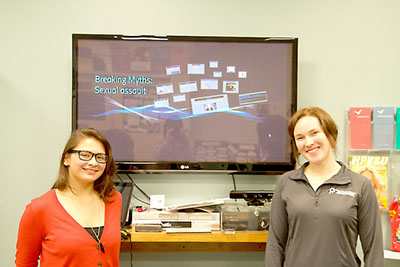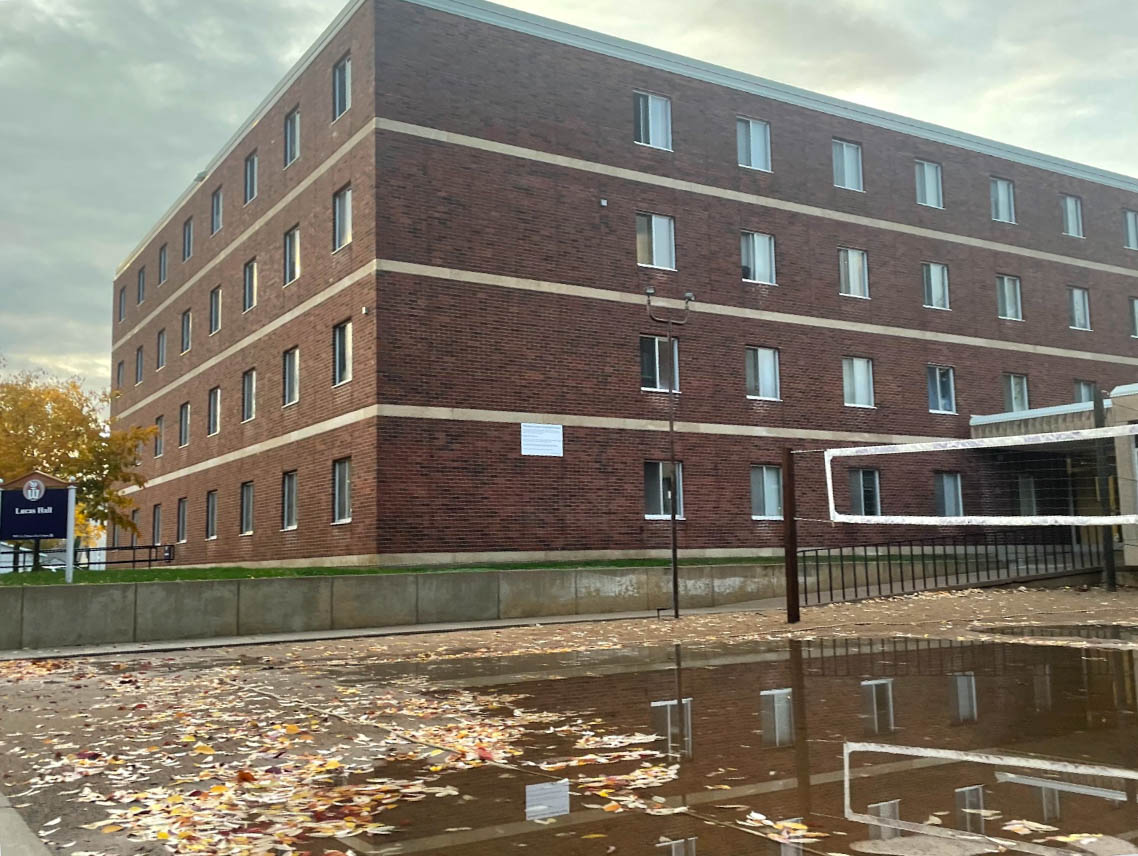
gender-based violence and its myths Monday, April 4.
(Photo by Sara Tiradossi)
Sara Tiradossi / Winonan
Campus safety concerns all students, and according to Winona State University health and wellness student advocates Carissa Balow and Mary Molstad, many women and men today are experiencing sexual assaults at their university.
Balow and Molstad hosted a presentation on gender-based violence and its myths Monday, April 4. They provided students with information about the reality of sexual assaults and how to make their voices be heard if they see or experience any type of sexual violence.
“Gender-based violence happens in our society, and it’s especially prominent around women,” Balow said.
Balow said statistics show 34 percent of young women between 16 and 24 will experience sexual assault at some point during college.
“The numbers are scary. That means one in five women will get sexually assaulted,” Balow said.
The results from a survey taken last fall by Winona State students revealed nearly 20 percent of students have reported experiencing sexual assault on campus.
“It’s surprising that it’s seen in our small community at Winona State,” Balow said.
Sticking to the gender-based violence prevention theme, the April 6 edition of Wellness Wednesdays, “Being an Active Bystander,” featured health and wellness advocate Andrew White.
White said the event examined how individuals can react positively or negatively in situations that can lead to potential harm.
Students identified the different reasons on why people do not intervene and created a discussion about additional ways they can make their voices heard in possible situations of violence, White said.
“Students were shocked at certain statistics, especially when hearing that 90 percent of rapes occur from acquaintances,” White said.
White added he was pleased to see many students were interested in this information and went to a voluntary event to learn about the subjects.
At Molstad’s and Balow’s event, they talked about the importance of providing a safe place for student survivors and how to let them know it is not their fault, especially during such a sensitive time of their life.
“To start, we need to believe in survivors and trust them,” Balow said. “We need to respect their right to make decisions following their assault and give them back power and control through empowering and supporting them.”
Molstad mentioned how the impact of the media can perpetrate a rape culture through language, the objectification of women’s bodies and the glamorization of sexual violence.
“We are creating a society that disregards women’s rights and safety. Most women and girls live in fear of rape, whereas men, in general, do not,” Molstad said.
According to Molstad, people see this type of culture a lot on a college campus, and the behaviors and language have become accepted as the norm.
The presentation also showcased myths behind sexual assaults, such as the one where people believe only certain types of people get sexually assaulted.
“Anyone can experience sexual assault: men, women, younger or older people,” Molstad said.
Other myths that were busted included people who report sexual assaults are just looking for attention, if a student has been drinking underage and reports sexual assault, he or she will get in trouble for underage drinking, and a student cannot remain anonymous when reporting a sexual assault.
“We can all do our part. If we see something, we have to say something,” Molstad said.
One of the ways people can do their part, Molstad said, is through an initiative on Winona State’s campus and other college campuses called PACT, which stands for “Prevent, Act, Challenge and Teach.”
“The main goal of PACT is to engage everyone in creating an maintaining a safe environment for everyone, rather than standing aside passively,” Molstad said.
The advocates highly recommend students to make use of the resources on campus.
At Winona State, students have many options for support, all of which are confidential. There are also trained peer advocates who answer a confidential helpline, Molstad said.








































